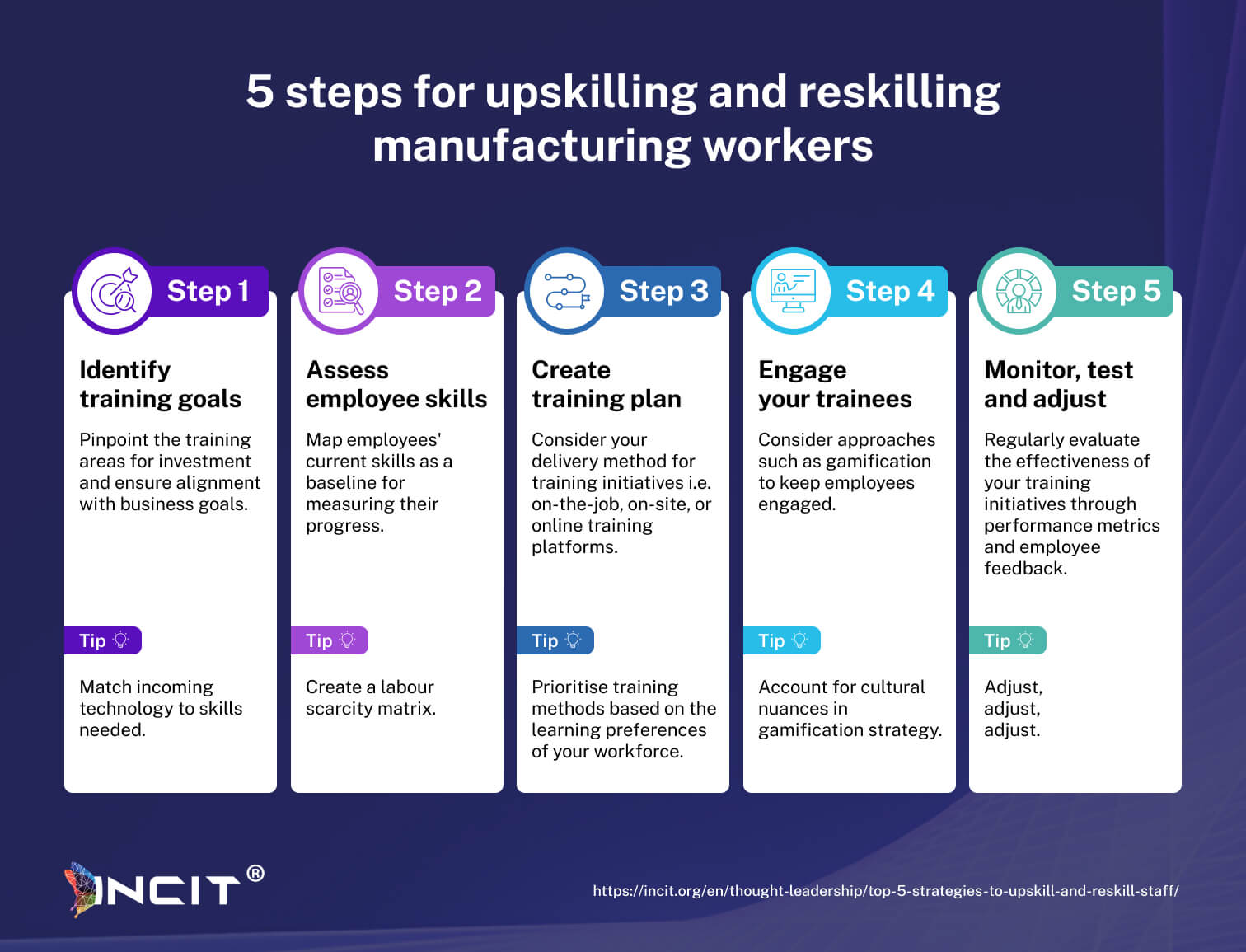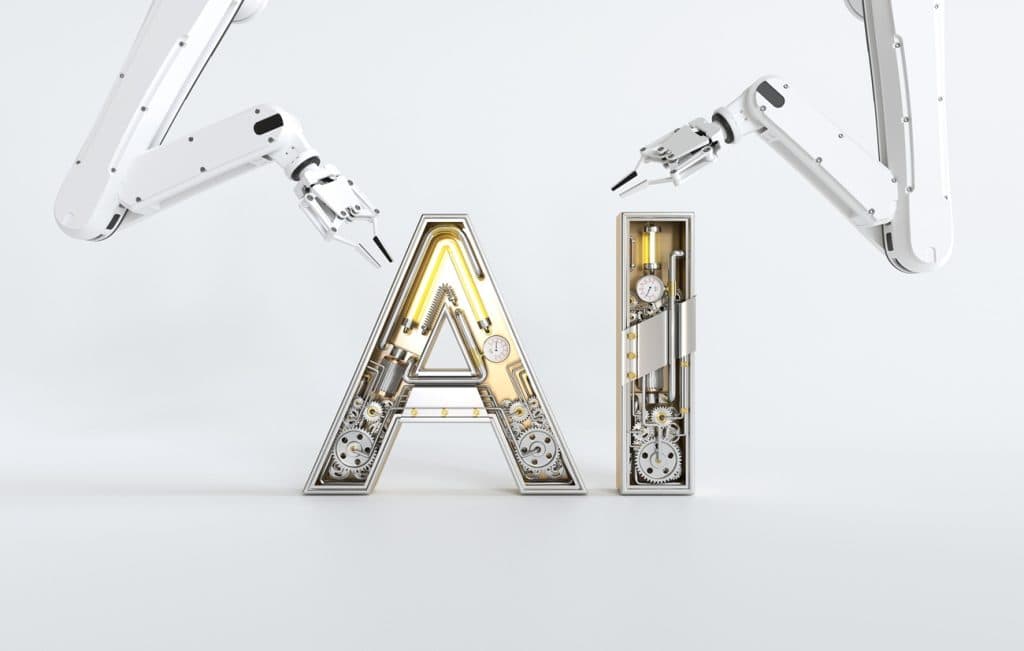The Deloitte-in araşdırmasının vurğuladığı kimi, istehsalatda əhəmiyyətli bacarıq boşluğu genişlənməkdə davam edir, 2,1 milyon doldurulmamış iş ABŞ-a təxminən $1 trilyon xərclə nəticələnəcək. 2030-cu ildə tək. Biz bilirik ki, hazırkı və gələcək istedad çatışmazlığının müxtəlif səbəbləri var, bunlar əsasən qocalmış işçi qüvvəsi, bacarıqlara uyğun olmayan texnoloji irəliləyişlər və istehsalda rolun necə göründüyünə dair köhnəlmiş baxışdan irəli gəlir. təsvir edilən təhlükəli, çirkin iş şəraitini xatırladır Amerikalı yazıçı Upton Sinclair-in "Cəngəllik".
görə ABŞ Ticarət Palatası, İstehsal sektorunda açılan iş yerlərinin 45 faizi yerinə yetirilməmiş qalır. Dünya İqtisadi Forumunun 2023 İş Gələcəyi hesabatda vurğulanır ki, qabaqcıl istehsalda mövcud bacarıq tələblərindən 40-ı növbəti beş il ərzində təkamülə məruz qalacaq. Aparılan sorğuya əsasən, liderlər həyəcan təbili çalıb Milli İstehsalçılar Assosiasiyası (NAM), istehsal menecerlərinin təxminən 75 faizi ixtisaslı işçi çatışmazlığını əsas biznes problemi kimi göstərdi.
İstehsalçılar təcili diqqət tələb edən əhəmiyyətli işçi çatışmazlığı ilə mübarizə aparır, lakin şirkətlər yaxınlaşan istedad böhranına hazırlaşmaq üçün nə edə bilər? Aşağıda, işçi qüvvəsi problemləri qarşısında dayanıqlılığı və böyüməyi təmin edən hədəflənmiş ixtisasartırma proqramları vasitəsilə işçilərin səlahiyyətlərinin artırılması üçün əsas addımları araşdırırıq.

Strateji bacarıqların artırılması təşəbbüsləri vasitəsilə gələcəyə hazır işçi qüvvəsinin artırılması
İstehsal sektorunda işçi çatışmazlığı indi endemikdir və daha da pisləşəcəyi gözlənilir. İstehsal şirkətləri üçün bacarıqların artırılması və yenidən bacarıqların artırılması təşəbbüslərinə sərmayə qoyması mütləqdir. İnkişaf edən iş rolları ilə uyğunlaşdırılmış məqsədyönlü təlim proqramlarını həyata keçirməklə və oyunlaşdırma kimi innovativ metodlardan istifadə etməklə (yenidən bacarıqları daha cəlbedici etmək üçün ondan istifadə edin!), istehsalçılar öz işçi qüvvələrini uyğunlaşmaq üçün gücləndirə və bununla da biznesdə əmək çatışmazlığını azalda bilərlər. Bu strategiyaların tətbiqi təkcə bacarıqlar arasındakı boşluqları aradan qaldırmayacaq, həm də qlobal bazarda davamlı inkişaf və rəqabət qabiliyyəti üçün istehsal firmalarını mövqeləndirəcək.
Bundan əlavə, ixtisaslaşdırılmış təlim proqramları, məsələn SIRI/COSIRI Proqram tərəfindən təklif olunur INCIT, istehsalda rəqəmsallaşma və davamlılıq təcrübələrini inkişaf etdirən bu sertifikatla liderləri davamlı bacarıq inkişafında dəstəkləyə bilər. Bu strategiyaların tətbiqi təkcə bacarıqlar arasındakı boşluqları aradan qaldırmayacaq, həm də qlobal bazarda davamlı inkişaf və rəqabət qabiliyyəti üçün istehsal firmalarını mövqeləndirəcək.
İstehsalda Təkmilləşdirmə və Yenidən Bacarıqlandırma Haqqında Tez-tez Verilən Suallar
Bacarıqların artırılması və yenidən bacarıqların artırılması üçün 4 strategiya hansılardır?
İstehsalda bacarıqların artırılması və yenidən bacarıqların artırılması üçün dörd əsas strategiya bunlardır:
- İş yerində təlim
- Rəqəmsal öyrənmə platformaları
- Sənaye-akademik əməkdaşlıq
- Sertifikatlaşdırma proqramları
Bu yanaşmalar işçilərə ağıllı istehsal və Sənaye 4.0 üçün yeni bacarıqlar əldə etməyə kömək edir.
İstehsalatda bacarıqların artırılması niyə vacibdir?
İxtisasların artırılması istehsalatda vacibdir, çünki o, işçilərin yeni texnologiyalara uyğunlaşmasına, məhsuldarlığın artırılmasına və sürətlə dəyişən Sənaye 4.0 mühitində rəqabətə davamlı qalmasına kömək edir.
İstehsalda bacarıqların artırılması ilə yenidən bacarıqların artırılması arasındakı fərq nədir?
Təkmilləşdirmə cari rolda inkişaf etmək üçün yeni bacarıqların öyrənilməsi deməkdir, yenidən bacarıqların artırılması isə işçilərin tamamilə yeni rollar üçün hazırlanmasını əhatə edir. Hər ikisi rəqəmsal transformasiya və avtomatlaşdırmanı dəstəkləmək üçün istehsalda vacibdir.
İstehsalçılar gələcəyə hazır işçi qüvvəsini necə yarada bilərlər?
İstehsalçılar davamlı təlimə sərmayə qoymaq, rəqəmsal alətləri mənimsəmək, öyrənmə mədəniyyətlərini qurmaq və işçi qüvvəsinin inkişafını Sənaye 4.0 texnologiyalarına uyğunlaşdırmaqla gələcəyə hazır işçi qüvvəsi yarada bilərlər.
İstehsalçılar işçi qüvvəsinin təlimində hansı problemlərlə üzləşirlər?
İstehsalçılar məhdud təlim büdcələri, rəqəmsal savadın olmaması, qocalmış işçi qüvvəsi və ağıllı istehsalda sürətlə dəyişən texnologiyalarla ayaqlaşmaqda çətinlik kimi çətinliklərlə üzləşirlər.
Ağıllı İstehsalatda Təkmilləşdirmə Nümunələri Nələrdir?
Ağıllı istehsalda bacarıqların artırılması nümunələrinə robototexnika, məlumat analitikası alətləri, rəqəmsal əkizlər, IoT platformaları və süni intellekt əsaslı istehsal sistemlərindən istifadə etmək üçün işçilərin təlimi daxildir.
Sənaye 4.0 işçi qüvvəsinin planlaşdırılmasına necə təsir edir?
Sənaye 4.0 tələbi texnoloji biliklərə malik rollara yönəltməklə, yeni bacarıqlar tələb etməklə və istehsalçıları təlim, işə götürmə və istedadların saxlanması strategiyalarını yenidən düşünməyə sövq etməklə işçi qüvvəsinin planlaşdırılmasına təsir göstərir.
İstehsalda işçi qüvvəsinin transformasiyası üçün ən yaxşı təcrübələr hansılardır?
İşçi qüvvəsinin transformasiyası üçün ən yaxşı təcrübələrə bacarıq boşluğunun qiymətləndirilməsi, fərdiləşdirilmiş öyrənmə yolları, liderliyin inkişafı, texnoloji təminatçılarla tərəfdaşlıq və Sənaye 4.0 məqsədlərinə bağlı fəaliyyətin izlənməsi daxildir.


